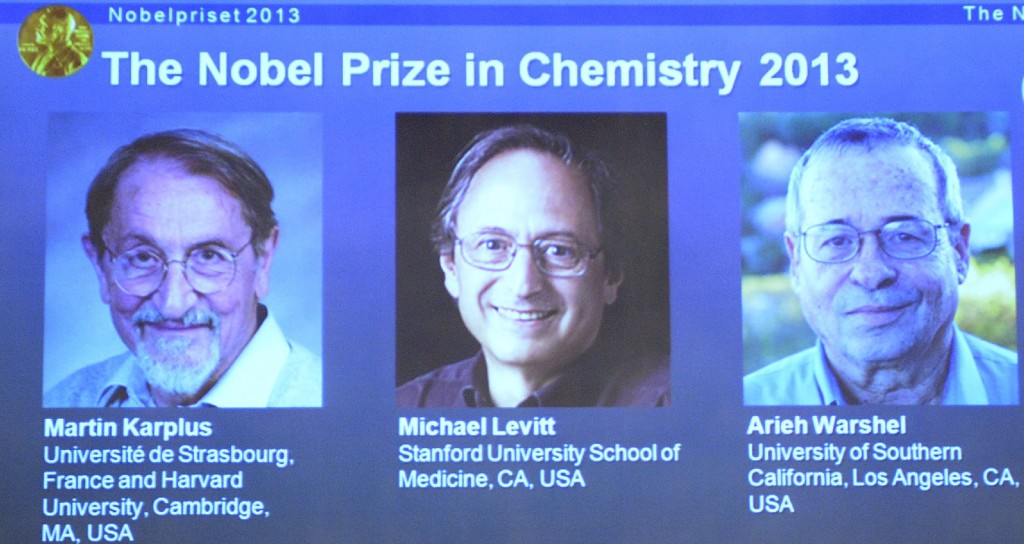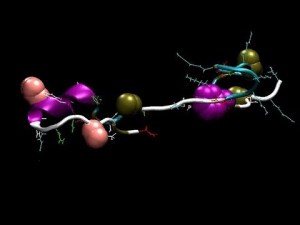
Stanford biologist Michael Levitt is one of three scientists to share the Nobel Prize in chemistry for developing powerful, computer-aided tools to model the complex chemical processes at the foundation of life. Levitt's co-winners are Martin Karplus of the University of Strasbourg in France and Harvard University, and Arieh Warshel of the University of Southern California.
When the three men started studying chemistry, scientists built models of atoms and molecules with sticks and balls. As you can imagine, that made it cumbersome to portray complex molecules, and nigh impossible to create a model of the light-speed chemical reactions by which cells consume food, say, or drugs battle bacteria.
Levitt, Karplus and Warshel won the Nobel prize for figuring out how to model these chemical reactions in cyberspace, at a time when computers still ran on punch cards, and didn't have the power to run the complex calculations needed. In his fascinating blog post, NPR's Michaeleen Doucleff explains how the work of each man dovetailed precisely with the others, to break open whole new possibilities for scientific research that had previously seemed out of reach.
Their work "led to such practical applications such as the production of human antibodies for modern anticancer therapy and catalysts to clean car exhaust fumes," Mercury News reporter Lisa M. Krieger explains.
Levitt said on a Stanford website honoring his award that he got the news early this morning.
"Like everyone else, one is surprised," said Levitt of the early morning call. "Now I just hope to get through the day and make sure that, in the end, my life doesn't change very much. Because I really have a wonderful life.
"My phone never rings," he added. "Everyone sends me texts and email. So when the phone first rang, I was sure it was a wrong number. When it rang a second time, I picked it up. I immediately heard a Swedish accent and got very excited. It was like having five double espressos."
All three of today's winners are immigrants who came to the United States early in their research careers: Levitt is a U.S.-U.K.-Israeli citizen born in South Africa; Karplus is a dual U.S.-Austrian citizen; and Warshel is a dual national of Israel and the United States.
